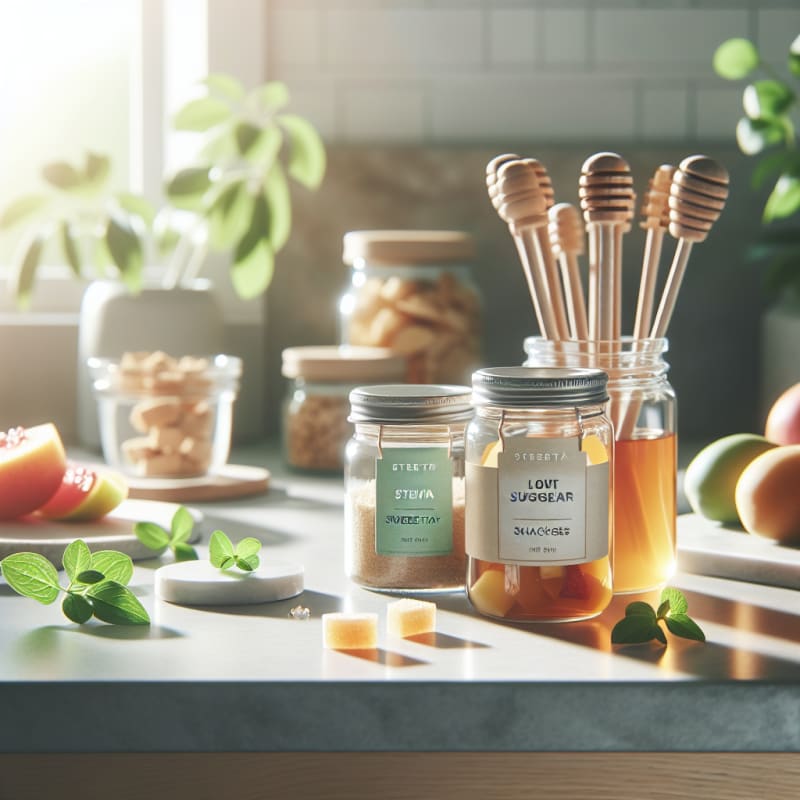Sugar Sensitivity 2025: How Hidden Sugars and Natural Sweeteners Are Changing Food Trends
In 2025, consumers are more aware than ever of what’s inside their food. The rise of sugar sensitivity—a growing concern linked to metabolic health—has sparked a global shift toward transparency, ingredient literacy, and the use of natural sweeteners over refined sugars. This movement is reshaping how brands formulate products and how people choose what to eat.
Understanding Sugar Sensitivity
Sugar sensitivity refers to how the body reacts to sugar intake, particularly in individuals prone to insulin resistance, fatigue, or metabolic disorders. According to the CDC’s 2025 report, excessive consumption of added sugars continues to contribute to rising rates of type 2 diabetes and obesity. These findings underscore why consumers are now scrutinizing ingredient labels more closely than ever.
Why Sugar Sensitivity Matters in 2025
- Increasing prevalence of metabolic disorders and insulin resistance.
- Growing awareness of hidden sugars in everyday foods.
- Shift toward natural sweeteners and low-sugar alternatives.
- Regulatory actions emphasizing sugar transparency and reformulation.
As highlighted by the Times of India, sugar isn’t the only enemy—hidden triggers like refined carbohydrates and artificial sweeteners also play a role in insulin resistance. This growing awareness is fueling a new generation of wellness-focused consumers who demand cleaner, smarter food options.
Hidden Sugars: The Silent Ingredient
Hidden sugars are often found in foods that don’t taste overtly sweet—such as sauces, breads, yogurts, and salad dressings. These sugars can appear under dozens of names, including maltose, dextrose, and syrup solids. The challenge for consumers is recognizing these disguised ingredients.
Common Sources of Hidden Sugars
| Food Category | Typical Hidden Sugar Names |
|---|---|
| Breakfast Cereals | Corn syrup, fructose, malt extract |
| Condiments | Honey powder, molasses, cane juice |
| Dairy Products | Lactose, sweetened whey |
| Beverages | Fruit concentrate, glucose syrup |
Research published in PubMed Central shows that reducing hidden sugars can improve metabolic markers and support long-term health. This scientific backing is driving reformulation efforts across the food industry.
Natural Sweeteners: The Healthier Alternative
Natural sweeteners such as stevia, monk fruit, and allulose have gained traction as healthier substitutes for refined sugar. These options provide sweetness without the sharp spikes in blood glucose associated with traditional sugars.
Top Natural Sweeteners for Sugar Sensitivity
- Stevia: Plant-based and zero-calorie, ideal for diabetics and those managing sugar sensitivity.
- Monk Fruit: Contains mogrosides, compounds that offer sweetness without raising blood sugar.
- Allulose: A rare sugar found in figs and raisins, known for its low glycemic impact.
Brands in 2025 are reformulating products to include these natural sweeteners, aligning with consumer demand for low sugar foods and clean-label ingredients.
Regulatory Actions and Industry Response
Regulatory bodies like the CDC are emphasizing clearer labeling and reduced sugar content in packaged foods. These actions are prompting food manufacturers to innovate with sugar-free and reduced-sugar alternatives.
According to recent industry reports, companies are investing heavily in R&D to replace added sugars with natural sweeteners while maintaining taste and texture. This trend aligns with broader wellness trends 2025, where transparency and health optimization are top priorities.
Consumer Behavior and Wellness Trends 2025
Consumers today are not just buying food—they’re buying trust. The rise of ingredient transparency and technology-driven tools is helping people make informed choices. Apps like Food Scan Genius allow users to scan product labels and instantly identify hidden sugars, allergens, and artificial additives.
“I started using Food Scan Genius after realizing how many hidden sugars were in my favorite snacks. It’s a game-changer for anyone managing sugar sensitivity.” — Mia, Food Scan Genius user
With Food Scan Genius, consumers can align their dietary preferences with their health goals, ensuring that every purchase supports their wellness journey.
How Sugar Sensitivity Is Shaping Product Innovation
The food industry is responding with a wave of sugar-free products and reformulated classics. From low-sugar beverages to naturally sweetened protein bars, brands are racing to meet demand.
Examples of 2025 Sugar-Free Innovations
- Functional drinks using stevia and electrolytes instead of sucrose.
- Plant-based yogurts sweetened with monk fruit.
- Snack bars using dates and allulose for balanced sweetness.
These innovations reflect a broader cultural shift toward mindful consumption, where taste and health coexist harmoniously.
How to Avoid Hidden Sugars in Processed Foods
For those managing sugar sensitivity, awareness is key. Here are simple strategies to reduce hidden sugar intake:
- Read ingredient lists carefully—look for words ending in “-ose.”
- Choose products labeled “no added sugar.”
- Use apps like Food Scan Genius for instant ingredient analysis.
- Opt for whole foods and naturally sweet fruits instead of processed snacks.
Broader Implications: Why It Matters to Everyone
Sugar sensitivity isn’t limited to those with diabetes or metabolic disorders. It affects energy levels, mood, and overall wellness. Understanding hidden sugars empowers all consumers to make smarter choices and support sustainable food systems.
As awareness grows, the demand for authenticity and transparency will continue to shape the future of food. The shift toward natural sweeteners and ingredient clarity is not just a trend—it’s a transformation in how we define healthy eating.
FAQs About Sugar Sensitivity 2025
What is sugar sensitivity?
Sugar sensitivity is the body’s heightened reaction to sugar intake, often linked to insulin resistance or metabolic imbalance.
How can I avoid hidden sugars in processed foods?
Check labels for alternative sugar names, choose “no added sugar” products, and use scanning apps like Food Scan Genius to identify hidden ingredients.
What are the best natural sweeteners for sugar sensitivity?
Stevia, monk fruit, and allulose are among the top natural sweeteners that offer sweetness without spiking blood sugar.
Are regulatory bodies taking action on added sugars in 2025?
Yes. The CDC and other agencies are promoting clearer labeling and encouraging food companies to reduce added sugars in packaged products.
How is sugar sensitivity influencing 2025 food trends?
It’s driving innovation toward low-sugar, clean-label foods and increasing consumer demand for transparency and natural ingredients.
Final Takeaway
In 2025, sugar sensitivity is more than a health buzzword—it’s a catalyst for change. As consumers demand transparency and healthier alternatives, brands are responding with innovation and integrity. Understanding hidden sugars and choosing natural sweeteners empowers everyone to make smarter, more sustainable food choices. Tools like Food Scan Genius make it easier than ever to take control of your diet and embrace the future of wellness.





